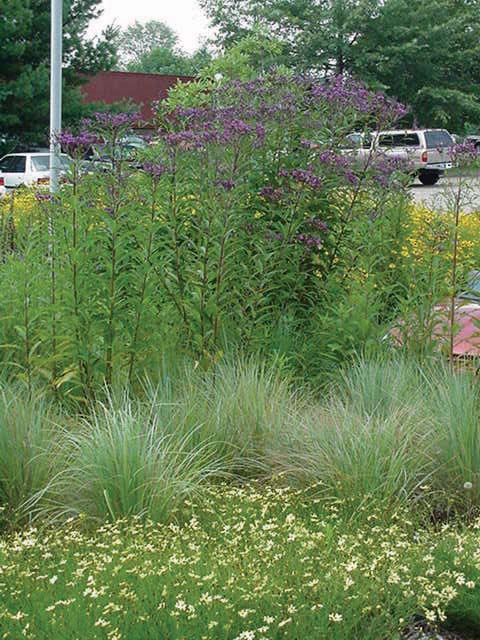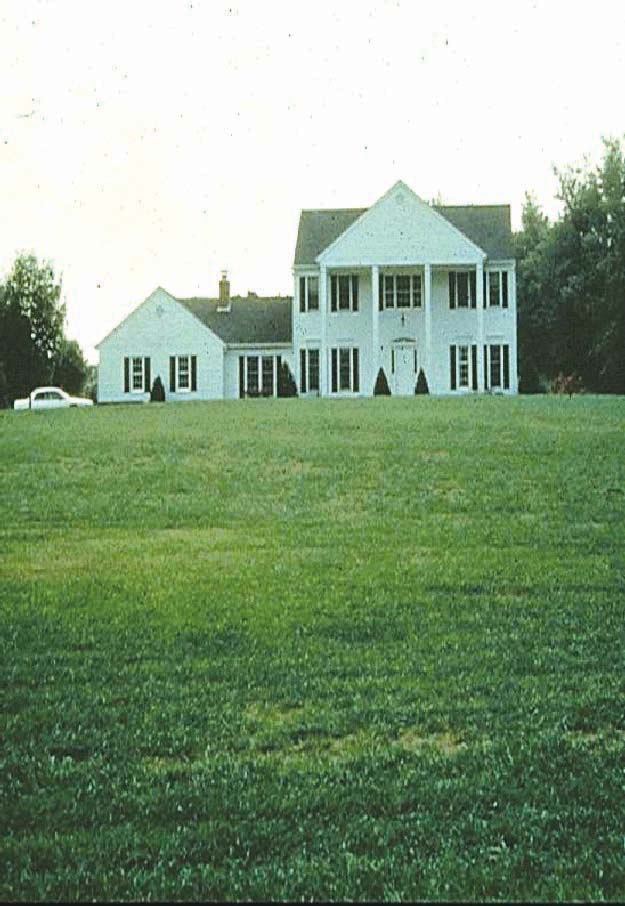Saving the Bay One Decision at a Time
By Kathy Reshetiloff
In 1966 an economist named Alfred E Kahn proposed that a common problem in market economics was what he termed the "tyranny of small decisions." This is where a series of small decisions made by individuals or groups of individuals add up to a bigger, often unexpected, result.
 In 1982 an ecologist William Odum applied this premise to the environment illustrating how small individual actions, when combined, can contribute to the degradation of the environment. More than 20 years later the tyranny of small decisions is still a problem for the Chesapeake Bay. In 1982 an ecologist William Odum applied this premise to the environment illustrating how small individual actions, when combined, can contribute to the degradation of the environment. More than 20 years later the tyranny of small decisions is still a problem for the Chesapeake Bay.
The main causes of poor water quality in the Bay are high levels of nutrients like nitrogen and phosphorus. Although nutrients are essential to all plant life within the Bay, an excess of these nutrients is harmful.
Excess nutrients fuel the rapid growth of algae known as blooms that cloud the water and reduce sunlight reaching underwater plants and animals. When large blooms die, huge amounts of oxygen are used up as they decay. Oxygen is vital to the animals and plants in the Bay. During low oxygen (hypoxic) or no oxygen (anoxic) conditions, almost all Bay life is affected.
Nutrients occur naturally in soil, animal waste, plant material, and even the atmosphere. Then sewage treatment plants, industries, fertilizers, vehicle exhaust, and acid rain add nutrients to the Bay and its rivers. So how much we drive our cars, whether we dispose of animal waste properly, whether we fertilize our yards are decisions that affect the Bay.
When the Bay was surrounded by forest and wetlands, nitrogen and phosphorus were absorbed or held in place by the natural vegetation. Today, much of the land in the watershed is taken by farms, cities, and suburbs. Now when it rains, nutrients from streets, lawns, farms and sewage-treatment plants wash into streams and rivers, eventually entering the Bay
So what can you do?
 Practice conservation landscaping. Use native plants that require less watering, fertilizers, pesticides and overall maintenance. Decrease the amount of lawn. Replace with shrubs, trees, gardens or meadows. Make sure gutters and sprinklers drain into grass or gravel areas to reduce runoff. Spread mulch on bare ground to help prevent erosion and runoff. Try safer alternatives for controlling pests. If you must buy toxic products, choose the least toxic product you can find and never buy or use more than you need. Start a compost pile to create a soil conditioner. Practice conservation landscaping. Use native plants that require less watering, fertilizers, pesticides and overall maintenance. Decrease the amount of lawn. Replace with shrubs, trees, gardens or meadows. Make sure gutters and sprinklers drain into grass or gravel areas to reduce runoff. Spread mulch on bare ground to help prevent erosion and runoff. Try safer alternatives for controlling pests. If you must buy toxic products, choose the least toxic product you can find and never buy or use more than you need. Start a compost pile to create a soil conditioner.
Conserve and protect water. The more water we use the more we must treat through septic systems or water treatment plants. Repair leaking faucets, install low-flow faucets and toilets and wash only full loads of laundry. Remember everything that goes down the drain eventually ends up in our waterways. Household cleaning products, car care products and paints are just a few of the chemicals that Americans dump down their drains every day. Sewage treatment plants and septic systems cannot remove all toxic substances from the water. Dispose of chemicals properly and, where possible, substitute an environmentally-safe alterative to chemical cleaning products.
Maintain your septic system properly. If you have a septic system, have it pumped out every three to five years to allow your septic tank to operate more efficiently. Be careful not to flush or pour into your drains anything that will kill the bacteria that live in your septic tank. Healthy colonies of bacteria in your septic tank are necessary for the process that treats wastewater and reduces the nutrient inputs to the groundwater. Don't plant trees or shrubs near the drain field because their roots can clog the lines. Do laundry throughout the week to avoid overloading the system on any given day.
Reduce your input of toxic chemicals. Use alternative, nontoxic products; like phosphate-free detergents and water-based products. Never pour household chemicals down drains. Read the labels to learn how to dispose of chemicals properly. Contact the county's Department of Public Works, 410/222-7425, to find out about recycling programs and programs for disposal of household hazardous waste.
Reduce the amount of miles you drive. This will result in reductions in the amount of nutrients and toxic substances entering the watershed. Plan trips to minimize miles driven. Combine errands to avoid unnecessary trips. Use public transportation, bicycle, or walk whenever possible. Join a carpool or ride sharing program. If possible, telecommute to work.
You might think these small changes really can't affect the Chesapeake Bay and its wildlife. But consider this: each of us living in the Chesapeake Bay watershed are within minutes of one of more than 100,000 streams, creeks and rivers that eventually drain into the Bay. Today, approximately 16 million people live, work and play in the Chesapeake Bay watershed. If each of us commits to altering our behavior in order to protect our environment, it will make a difference.
Back
|

